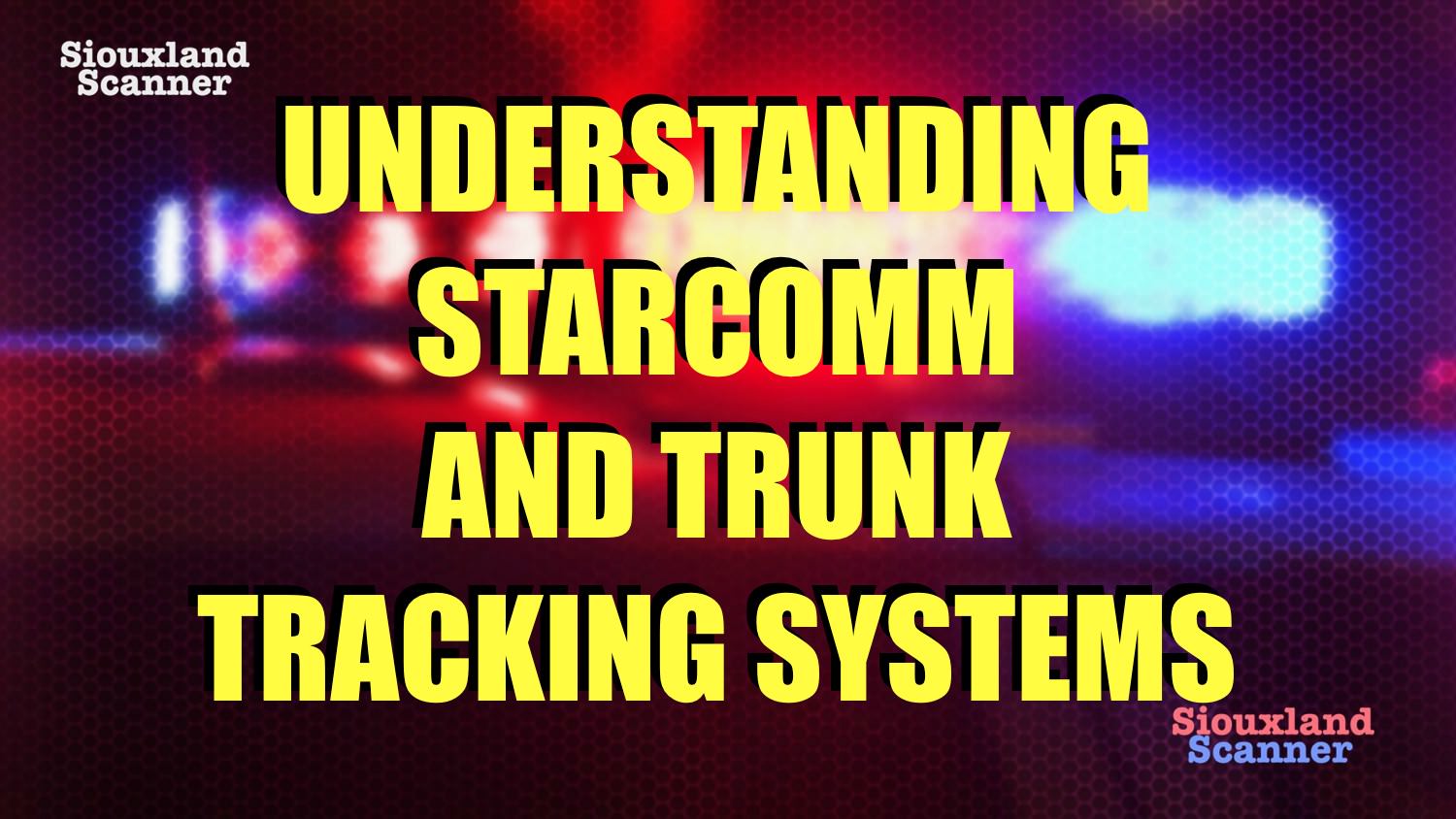Many people when they think of scanner listening they think back to years when you typed in a frequency on your scanner for a department you wanted to listen to. Once programmed you heard them talking. Over the last 20 years that technology has changed.
There are still some agencies that use simplex analog frequencies for communication, but many these days are digital and duplex, and almost all larger agencies have gone to trunking systems that have many variations of technology layers everywhere from analog to digital.
To keep things simple think of a trunk tracking system as a hotel. The system or hotel in our example can vary greatly in features and technologies available to the user, think of these as hotel amenities. The hotel address is the system's frequency, there are actually multiple frequencies we’ll come back to that. Next, think of the hotel rooms as talk groups. Talk groups or hotel rooms are assigned to each department on the system. When a user or hotel guest needs to talk they tune their radio to their department's talk group, hotel room.
Each hotel room can have it’s own upgrades as far technology and features available within the system, it may or may not have encryption. Maybe it’s an adjoining room and can easily be patched to another talk group.
Lets go back to the address, trunk tracking systems use multiple frequencies. Generally, a system has a control channel and then a handful or more of frequencies. The control channel is used to assign a frequency to the user for communicating with a talk group, and then unassigned it when the communication has stopped. This process actually happens each time a user keys their mic. A trunk tracking system allows for fewer frequencies that need to be used for multiple agencies all on the same system.
In short whereas in times past each department generally had their own frequency when let's say 10 departments are on a trunking system they may be able to get by with 3 or 4 frequencies rather than needing 10 as the system uses and assigns an open frequency from the pool as needed when there is activity. Once you program the system type and frequencies of a system, you then program talk groups for what departments on that system you want to listen to. If you only program your scanner based on frequencies and not as a trunked system you will miss a lot of traffic on the system and you can't decide which departments you do and do not want to hear.
With recent upgrades to the STARCOMM system, many agencies including Sioux CIty Police Department, Woodbury County Sheriff's Office, Sergeant Bluff Police Department, Dakota County Sheriff's Office and South Sioux City Police Department have chosen to encrypt all of their traffic, with the previous version of the system most non-sensitive traffic was open and could be heard by anyone with a properly programmed scanner. It also only required a digital trunk tracking scanner. It now requires a TDMA digital trunk tracking scanner, as many of the talk groups require TDMA. Encrypted channels cannot be heard by any scanner, that requires a commercial grade radio that is capable of the proper encryption types. In addition, it requires access to that encryption key, encryption keys are essentially very long strong passwords without it all you hear is scrambled audio.
With the right scanner and programming information, you can still hear Sioux City Fire Rescue, Siouxland Paramedics, Woodbury County Fire, North Sioux City Police Department and Mercy Air Care (MAC1). Woodbury County Fire is actually still analog, over the last few months, they have had that traffic patched to the old STARCOMM system. I would imagine they will reenable that patch soon also information available says Woodbury County Fire will be moving to STARCOMM in the future and will not be encrypted and will not be TDMA.
In the last few years, STARCOMM administrators made it know the system was aging and in need of upgrades. During the process of determining what upgrades would happen agencies like Sioux City Police Department and Woodbury County Sheriff told the public they planned to encrypt their main dispatch channels that were not previously encrypted, the main reason given was officer safety. They had found that more and more criminals were listening to scanner traffic a lot of times on smartphones from available apps to keep one step ahead of them. It was also decided during this upgrade decision-making process to join in with the state system, ISICS. Other agencies that have chosen to change their dispatch channels to encrypted channels did not share this information with the public.
STARCOMM is now also part of Iowa Statewide Intercommunications System (ISICSB) This is a statewide system intended to lessen costs for agencies that join it by using existing resources available from the system, increasing interoperability between agencies that use it and allowing departments coverage throughout the state where there is another ISICS system.
Article Categories
#CrimeSUX
806#FireSUX
95#TrafficSUX
142#WeAreSiouxland
34#WeatherSUX
10#VideoSUX
278#PhotoSUX
675Misc
114Recent Articles
Man Electrocuted While Stealing Copper another Arrested
Motorcycle Crash 18th and Ingleside Claims Life of Sioux City Man
Support Siouxland Scanner and get more features.


